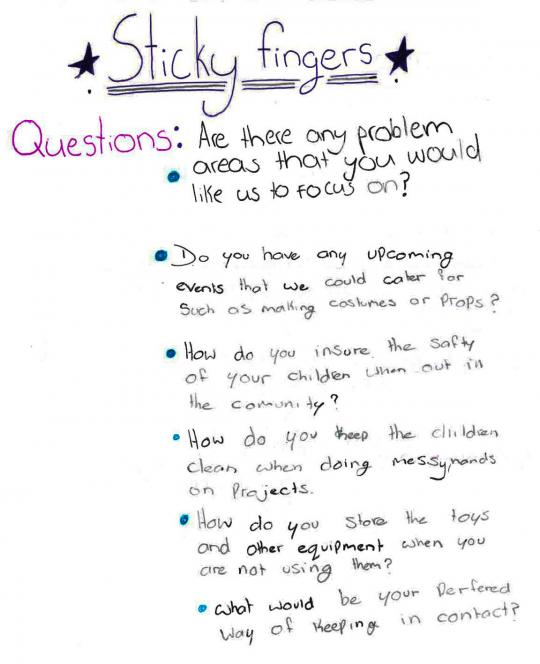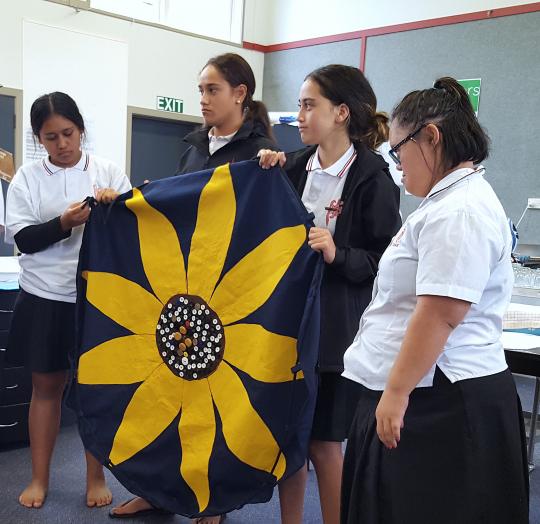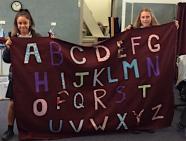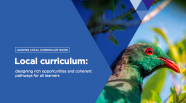Local curriculum design: Community projects in year 10 textiles materials
This snapshot is an example of local curriculum design.
Pay it forward is a theme for a school-wide initiative at Gisborne Girls’ High School.
Each year the school holds a “Pay it forward day”. Students select a community organisation and assist the organisation for the day.
Sue Bristow, textiles materials teacher, was interested in using this concept over a longer period of time within the year 10 textiles materials programme.
She had noted that students selecting year 11 textiles came with some basic textiles construction skills from the current programme. However, their broader understanding of the technology learning area concepts needed enhancing to better prepare them for year 11 and NCEA level 1.
Getting started
Engaging with community groups

Select the image to view at full size.
Sue approached a range of local community groups. She let them know that the year 10 students were available to engage with their organisation and create a textile product to address a need or opportunity.
The students were also encouraged to approach organisations that they knew or had contacts within.
Sue explained to the students that the approach they needed to make was to ask the organisation what problems they currently had – and go from there. They were to begin with the need or opportunity.
Within this approach, students would carry out in-depth research with their stakeholders and could explore the possibility of more than one problem and more than one solution.
Communicating with stakeholders
After an initial face-to-face meeting with their organisation, students generally used emails to communicate with stakeholders to gather further information on the requirements for their outcome. Sue checked the emails before the students sent them and facilitated the students’ research process by prompting with questioning.
It was a new experience for students to create a product to meet the needs of others. However, the students confidence in communicating with stakeholders and asking relevant questions increased over the time of the project.
Working effectively as a group

Sue emphasised with the class right from the beginning the importance of being able to work in a group and that future employers will be looking for people who can work with others.
The support Sue provided was often around the time management of the projects, and that it was the group’s priorities that were important rather than individual priorities.
The groups were self selected and generally cohesive. Deadlines were set at the beginning and all projects had to be complete and ready for the presentation event in the last week of term. The timeframe of ten weeks combined was adequate for the project. (Students attend this course for four hours per week.) The students needed guidance on what was possible to construct in this timeframe.
Sue worked facilitating group progress and offering support as needed. Students do work in groups in other learning areas at Gisborne Girls' High School. However, Sue notes that students take time to learn how to work well in a group.
The on-going individual group facilitation approach was effective but some more explicit teaching around effective group work may also be beneficial with future groups. Teaching groups how to select and resource the necessary materials for projects will become a greater focus in the next round of this programme.
Outcomes

The majority of students completed their outcomes to a quality standard on time.
The outcomes produced by the students included:
- A shade curtain for a deck at an early childhood centre (The letters of the alphabet were attached with velcro to the outside for use as a teaching tool.)
- A tactile mat that also served as a toy bag for students
- Blankets for an early childhood education centre
- Table mats for an aged-care residential home
- Character aprons for a kindergarten
- Bunting for a childcare organisation
- Hacky sacks for an aged care residential home for healing and activity programmes
- A wall hanger for a kindergarten to store spare underwear for the children
- Puzzle bags for a primary school
The community organisations were invited to a morning tea event and presented their finished products to their organisations. Senior management attended the presentation and the students' success was celebrated on the Gisborne Girls’ High Facebook page.
Community projects provide opportunities for students to use the Key Competencies of relating to others and participating and contributing.
Feedback from the community organisations
A primary school
Just a quick note to say thank you very much for encouraging the girls to carry out projects that have a real life context as part of their year 10 textiles class. A great idea, and a wonderful way of connecting with the wider community.
Room 9 are really happy with the puzzle bags. They love the bright vibrant colours of the bags. The children were very excited to have the girls here to share them with the class. They are loving how easy it is to manage the puzzles at pack up time.
A rest home for the elderly
We would like to thank you for the "hacky sacks” you have made and donated to the home; as discussed with you we will be able to use these in various ways to assist our residents including:
- residents with dementia can hold and fiddle and enjoy the various textures and feel ( people with dementia are very receptive to different textures)
- providing an alternative for residents who need to build up hand / finger strength and dexterity as part of the rehabilitation process following a stroke
- being incorporated into various games for residents as part of their activity programmes
It was nice to be able to show you, with some of the residents, how these can be used and how they will assist them in healing and activities.
You might also like ...
Leading Local Curriculum Guide series
This guide series has been developed to deliberately steer your curriculum and assessment review and design decisions as you strengthen your local curriculum.


